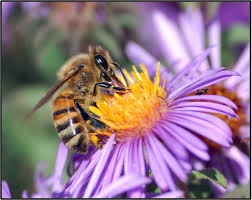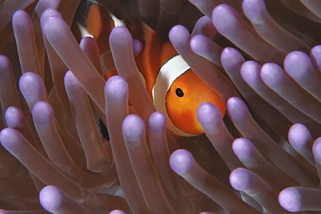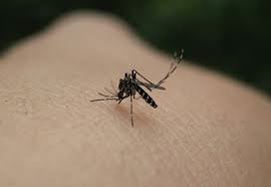Predator Assignment Help
Predator/prey relationship, symbiotic relationships, competitions, parasitism, predation, mutualism and commensalism
Predators are those organisms that eat other organism and prey are the organism that becomes the food of the predators. The prey/ predator relationship is always interesting that help to keep the balance in the ecosystem.
Many examples can be noticed in case of prey/ predator relationship. Like lion that prey upon deer, deer that pray on plants, likewise fox and rabbit, grasshopper and leaf are some of the good example of predator/ prey relationship.
When we talk about organism, there is always a relationship between them; this relationship can turn out to be beneficial to one and not to the other, whereas on the other hand it can be advantageous for both. This interaction between two and more living organism that lives together and without one, the cycle is incomplete for the other is called symbiotic relationship. This relationship can be of any type that can be explained under different terms. The further classification of symbiotic species include obligate and facultative where obligate means the relationship where both the organism cannot exist without one another and facultative means the organism stay together with their own wish or choice. Thus, the further classification includes:
1. Mutualistic relationship:  In this case both the organisms are benefited, i.e. one organism benefits the other, and similarly the other also benefits the former one. There are several examples that show mutualistic relationship between two interacting species. First is the, insects and plants relationship. In this case, insects pollinate the flower and disperse the pollen grains to different places. Likewise, on the other hand, plants provide insects with food and juicy fruits. This way both benefits each other. The other interesting example can be seen between fungi and the roots of higher plants called micorrhizae. In this case, fungi benefits plants by providing essential nutrients whereas plant benefits this fungi by providing carbohydrates. This way, in mutualism both the interacting organism benefits one another. Image reference: www.education-portal.com
In this case both the organisms are benefited, i.e. one organism benefits the other, and similarly the other also benefits the former one. There are several examples that show mutualistic relationship between two interacting species. First is the, insects and plants relationship. In this case, insects pollinate the flower and disperse the pollen grains to different places. Likewise, on the other hand, plants provide insects with food and juicy fruits. This way both benefits each other. The other interesting example can be seen between fungi and the roots of higher plants called micorrhizae. In this case, fungi benefits plants by providing essential nutrients whereas plant benefits this fungi by providing carbohydrates. This way, in mutualism both the interacting organism benefits one another. Image reference: www.education-portal.com
2. Commensalism:  In this case, one organism is benefited and other is neither harmed and nor benefited. There are many examples for this interaction. Sea anemone and clown fish is a convincing example where sea anemone has stinging tentacles due to which the population of clown fish lives between them. This saves those fishes but sea anemone is not benefited in any way. Image reference: www.correialifescience.com
In this case, one organism is benefited and other is neither harmed and nor benefited. There are many examples for this interaction. Sea anemone and clown fish is a convincing example where sea anemone has stinging tentacles due to which the population of clown fish lives between them. This saves those fishes but sea anemone is not benefited in any way. Image reference: www.correialifescience.com
3. Predation:  It is the relationship in which one is the predator and other becomes the prey. Like that of tiger and deer where tiger is a predator and deer is the prey. Likewise, in other example it can be noted that cow eat grasses, here cow is the predator and grasses are the prey. In case of prey and predator, if the predator becomes excess than prey or the vice- versa, the complete cycle will gets disturbed. So, to keep the balance, the number of prey and predator must be maintained. Image reference: www.flickr.com
It is the relationship in which one is the predator and other becomes the prey. Like that of tiger and deer where tiger is a predator and deer is the prey. Likewise, in other example it can be noted that cow eat grasses, here cow is the predator and grasses are the prey. In case of prey and predator, if the predator becomes excess than prey or the vice- versa, the complete cycle will gets disturbed. So, to keep the balance, the number of prey and predator must be maintained. Image reference: www.flickr.com
4. Parasitism:  In this case, the relationship is such that one organism is benefited as a parasite and the other is harmed called the host that may even die. Generally we can see some parasite residing in animal body and using animals blood for their own growth and maintenance. Example include: tapeworm that gets attach inside animals body and eats partly digested food of the animals. Since these parasites rely on the host, so it does not immediately harm the host but in a long run host can suffer from lots of diseases due to these parasites. Image reference: www.moodleshare.org
In this case, the relationship is such that one organism is benefited as a parasite and the other is harmed called the host that may even die. Generally we can see some parasite residing in animal body and using animals blood for their own growth and maintenance. Example include: tapeworm that gets attach inside animals body and eats partly digested food of the animals. Since these parasites rely on the host, so it does not immediately harm the host but in a long run host can suffer from lots of diseases due to these parasites. Image reference: www.moodleshare.org
5. Competitions:  We know the actual meaning of competition. Even human beings compete in different fields to score the best position and get all the desired materials likewise, other living organism also compete and this competition is for the food, shelter and the survival. Generally, competition between same species is very strong but different species may also compete for the same resources. Therefore, as said by Darwin, competition also shows the fitness of the organism, i.e. if one organism compete for any resource with the other and it fails then the fitness of other organism is higher, this way competitions always bring some changes in the population. This way these relationships between organism help to check the entire population and maintain their number, thus balancing the ecosystem. image reference: www.ro0xtsb-rosalba.blogspot.com
We know the actual meaning of competition. Even human beings compete in different fields to score the best position and get all the desired materials likewise, other living organism also compete and this competition is for the food, shelter and the survival. Generally, competition between same species is very strong but different species may also compete for the same resources. Therefore, as said by Darwin, competition also shows the fitness of the organism, i.e. if one organism compete for any resource with the other and it fails then the fitness of other organism is higher, this way competitions always bring some changes in the population. This way these relationships between organism help to check the entire population and maintain their number, thus balancing the ecosystem. image reference: www.ro0xtsb-rosalba.blogspot.com


